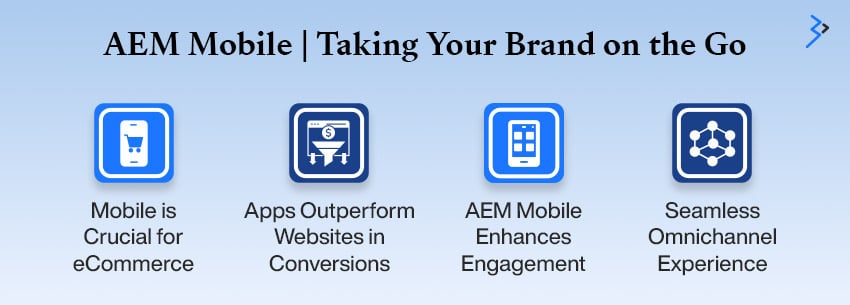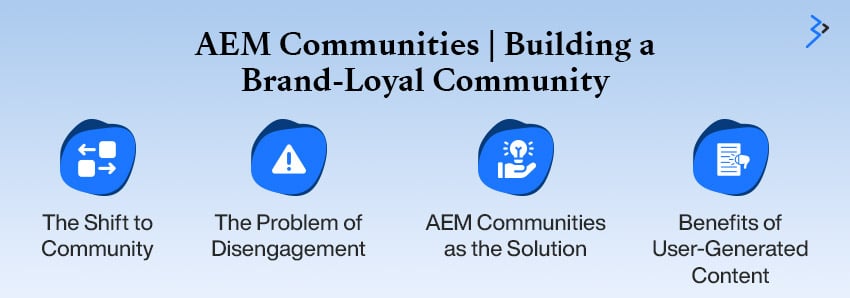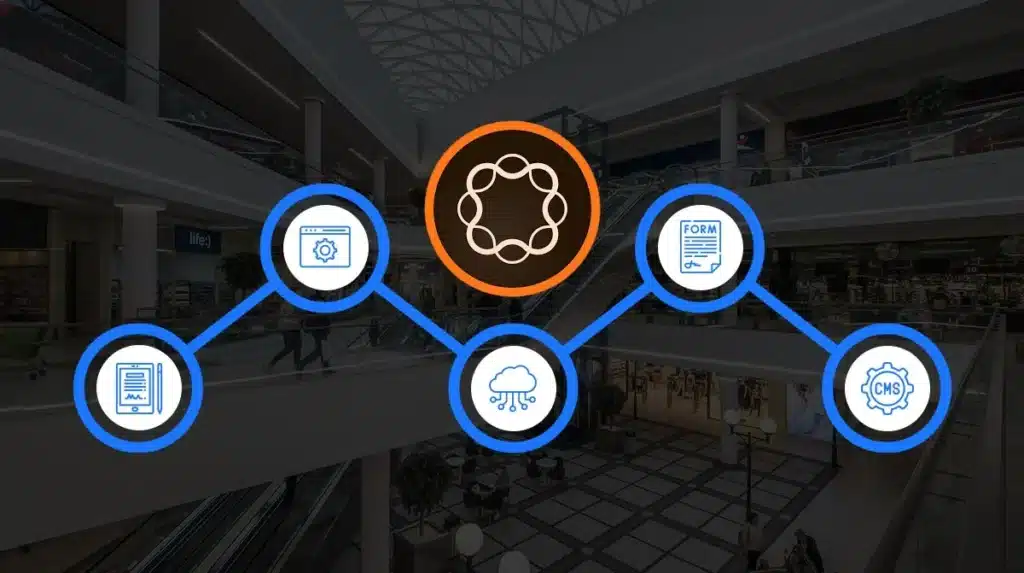Ever browsed an online store and thought, “Wow… this feels like a maze?” Products showing up in the wrong places, pages loading slowly, and frustrating checkouts make you want to give up altogether.
If an eCommerce site feels that way, imagine how it feels to your customers.
In today’s world, your website isn’t just a shop window. It’s your community, brand voice, and customer service desk all rolled into one. And if it’s clunky, slow, or hard to navigate, shoppers won’t just abandon a cart; they’ll leave you.
But here’s the exciting part: it doesn’t have to be that way. What if you had one powerful platform that brought everything together, content, data, design, and commerce, so your site worked and delighted every visitor?
That’s precisely what Adobe Experience Manager (AEM) does. Think of it as the secret engine behind seamless, modern digital experiences. We base it on five core pillars that combine to transform your site from “just another store” into an unforgettable experience for your customers.
Read More – Exploring the Value of a Headless CMS with Adobe Experience Manager
Pillar 1: AEM Sites | Your Foundation for a Flawless Customer Journey

You only have a few seconds to win over your website visitors. If your page takes too long to load, they’ll likely click away and never return. Today’s customers won’t wait; they expect a smooth, fast, and effortless experience on any device. Here’s the challenge: your site feels slow and clunky. Content is scattered across different teams and systems, making updates or new campaigns a headache.
The result? A confusing, disconnected experience that turns customers off. That’s where Adobe Experience Manager (AEM) Sites steps in. With its AI-powered content management system, you can create, manage, and deliver engaging content at scale. The best part? Every interaction, desktop, mobile, or app, stays fast, relevant, and seamless.

- A Google study found that when page load time is between 1 and 3 seconds, the probability of a bounce goes up by 32%. For every second of mobile page load delay, conversions can fall by 20%.
AEM Sites don’t just help build faster websites but also leverage an innovative headless CMS. But what does “headless” mean? Think of it this way: your content (the “body”) is managed in one place, completely separate from how it’s displayed (the “head”). This separation gives you excellent flexibility.
You can create content in one go and deliver it anywhere on your website, in a mobile app, in-store screen, or even through an AR experience. That means faster updates, smoother workflows, and a system ready for whatever digital channels come next. The bonus? A quicker, more agile site that also wins big with SEO, giving your brand the kind of visibility and performance that any top SEO agency strives to deliver.
Pillar 2: AEM Assets | The Brains Behind Your Visuals

Today’s eCommerce thrives on visuals, sharp photos, immersive videos, and 3D models. But behind the scenes, managing these assets often turns into chaos. Teams scatter files across different folders, causing old versions to resurface and wasting hours searching for the correct product image. The result? Delays, inconsistencies, and missed opportunities.
That’s where AEM Assets comes in. It’s a centralized, AI-powered hub that keeps every photo, video, and creative file in one place. With Adobe Sensei doing the heavy lifting, like automatically tagging and organizing, your team can focus on creating and selling, not searching.
- According to Cloudinary, a DAM system’s real ROI lies in time saved, improved team efficiency, and better content management. It simplifies workflows and automates time-consuming tasks.
With AEM Assets, you don’t have to dig through endless folders to find the correct file. The system automatically tags and organizes everything, so a quick search for “red jacket” instantly pulls up every matching image. Even better, AEM creates ready-to-use versions of your content for different channels, such as a crisp high-res image for your product page and a lighter version for your mobile app perfectly aligning with modern mobile app development services to deliver seamless performance across devices.
That means faster load times, a smoother user experience, and less manual work for your team. By centralizing and automating these tasks, AEM gives your creatives more time to do what they love, crafting great content.
Pillar 3: AEM Mobile | Taking Your Brand on the Go

You could miss out on significant revenue if you don’t optimize your eCommerce platform for mobile devices. Companies increasingly recognize that consumers make most shopping decisions primarily through mobile devices. Businesses often ask: Should we focus on a responsive website or a mobile app? AEM supports both, but the numbers show apps consistently win in loyalty and conversions.
The problem is that many mobile websites feel slow and clunky. Shoppers struggle with navigation, checkout takes too long, and frustration leads to abandoned carts. That’s where the opportunity is lost. AEM Mobile changes the game by letting businesses create and manage engaging mobile apps from a single platform. While a responsive site is still essential for discovery, a native app is where you build deeper connections, smoother experiences, and repeat purchases.
- The numbers don’t lie. MobiLoud reports that mobile apps convert customers at a rate 3x higher than mobile websites. Additionally, users view 4.2x more products per session on an app than on a mobile site.
AEM Mobile enables you to build apps with deeper engagement through features like push notifications and offline access, which are impossible with a simple mobile website. Apps can also use device features like the camera and GPS for more personalized shopping experiences.
Using AEM to manage your website and app helps create a seamless omnichannel experience. You can reuse content and ensure that data flows freely. Establishing a clear pathway for new customers who discover your brand through your website helps them become loyal, high-value customers who prefer using your app.
Pillar 4: AEM Forms | Turning Frustration into Conversions
Think about the last time you gave up filling out an online form. It could be too long, confusing, or plain annoying.
You’re not alone; every abandoned form is a lost lead, a missed sale, and proof that something in the experience isn’t working. Whether it’s a newsletter sign-up, a service inquiry, or a checkout page, a clunky process makes customers walk away.
That’s where AEM Forms comes in. Instead of feeling like a chore, AEM turns forms into simple, responsive, and even personalized experiences. With innovative features and seamless integration, they feel less like paperwork and more like a natural part of the customer journey, helping you keep more leads and close more sales.
- Personalization is a key driver of success. A Contentstack study shows personalized calls-to-action (CTAs) can outperform generic versions by 202%.
With AEM Forms, you can use conditional logic to show questions only when they are relevant. You can pre-populate fields with customer data, making it a seamless experience. You can also track user behavior in real time, identify where customers are dropping off, and A/B test different form designs to optimize conversions. Turning a source of frustration into a seamless experience can increase lead generation and improve customer satisfaction.
Read More – Scaling eCommerce Success with Adobe Experience Manager and Cloud Integration
Pillar 5: AEM Communities | Building a Brand-Loyal Community

Today, customers want a connection more than a product. They trust other customers’ voices far more than ads and look for spaces where they can share, learn, and feel part of something bigger. The challenge? After making a purchase, many customers disappear with no reason to return.
That means lost feedback, weaker word-of-mouth, and missed chances to build loyalty.
AEM Communities solves this by creating your site’s forums, groups, and interactive hubs. These spaces spark conversations, invite user-generated content (UGC), and keep customers engaged. That authentic content builds trust while turning everyday buyers into long-term advocates.
- Monetate shows that paid ads displaying user-generated content have higher click-through rates and can cost less than standard ads.
AEM Communities allows you to build a branded social space where your customers feel heard and connected. They can ask questions, share reviews, and post their own experiences. When shoppers see real customer photos or feedback on your product pages, it builds instant trust because nothing speaks louder than genuine voices.
Ecommerce brands that showcase user-generated photos often boost sales since buyers relate more to real people than polished ads. Fostering this kind of community doesn’t just drive purchases. It creates loyal advocates who keep coming back and spreading the word.
Putting It All Together: The Brainvire Advantage
Adobe Experience Manager Services derives its true strength from the collaboration of its five key pillars. They don’t operate in silos; they work together to create a single, unified, and intelligent digital experience. A customer who discovers your brand through a lightning-fast site (AEM Sites) sees an ad for a new product with an immersive video (AEM Assets), downloads your mobile app to check reviews from other users (AEM Mobile, AEM Communities), and finally, completes a seamless checkout process (AEM Forms).
Isn’t the website supposed to go beyond aesthetics? It is about building a stronger business overall. By leveraging the full suite of AEM tools, you can:
- Increase Revenue: Companies that invest in a unified digital experience can see increased customer spending. According to McKinsey via Invesp, companies with personalization strategies can see 40% more revenue from their efforts.
- Boost Conversion Rates: You can significantly increase conversions by streamlining the user experience and delivering personalized content.
- Enhance Customer Loyalty: Instapage reports that delivering a personalized and seamless experience increases customers’ lifetime value by 33%.
The article not only outlines AEM’s features but also presents a narrative that directly addresses the challenges eCommerce businesses face. It showcases how AEM delivers a strategic edge by facilitating a seamless, personalized, and efficient customer journey from beginning to end.
Conclusion
The future of eCommerce belongs to brands that deliver connected, seamless experiences, not those weighed down by scattered tools and outdated systems. Adobe Experience Manager (AEM) gives businesses the unified foundation they need to thrive in this fast-paced digital world.
Integrating AEM’s five core components: Sites, Assets, Mobile, Forms, and Communities, helps you effectively manage content and craft personalized experiences that encourage customer loyalty. At Brainvire, we’ve helped global brands harness the full power of AEM to transform their eCommerce platforms into experience-driven ecosystems. With the right strategy and implementation, you can tap into new levels of growth, customer loyalty, and digital impact.
FAQs
Unlike traditional platforms that treat content and commerce separately, AEM brings them together. It allows brands to deliver fast, personalized, and consistent experiences across websites, apps, and other digital touchpoints—helping customers engage more deeply.
While AEM is popular with global enterprises, its modular, cloud-native setup makes it scalable for mid-sized businesses too. You can start with key features like AEM Sites or Assets and expand as your business grows.
AEM focuses on creating meaningful interactions. From AI-powered personalization to building customer communities and mobile-first experiences, it ensures customers not only shop but also return, engage, and connect with your brand.
Businesses often see returns through faster go-to-market launches, reduced operational costs, and higher conversions from personalized journeys. The ability to streamline workflows also frees teams to focus on innovation instead of repetitive tasks.
Brainvire brings deep expertise in both AEM and eCommerce ecosystems. We design, integrate, and optimize AEM specifically for your business goals—ensuring faster adoption, improved performance, and long-term growth.
Related Articles
-
Deliver Winning Content at Scale with Adobe GenStudio for Performance Marketing
Marketing departments are under pressure to provide targeted content as budgets compress. Marketers must create compelling, successful campaigns with current and relevant content for all consumers, channels, and platforms. Generative
-
From RFP to Go-Live: How Enterprises Implement AEM Successfully
Imagine a world where your marketing team launches 65 hyper-personalized campaign variations in a single week, achieving a $1.2 million increase in Q3 revenue simply because your content could adapt
-
Discover the Latest Features and Updates in AEM 6.6 Release
Adobe Experience Manager Services (AEM) is poised for a significant evolution with the upcoming release of AEM 6.6, also known as AEM 6.5 2025 Edition. This new version will mark




